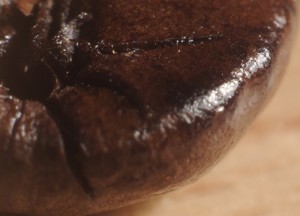by Michael Sheridan of CRS Coffeelands Blog
Manuel Díaz is an independent consultant who helped CQI create its new R standards, which aim to do for Robustas what the Q standards have done for Arabicas. His presentation on Day Two of the 2013 edition of Let’s Talk Robusta reinforced the central appeal of the brilliant keynote delivered on Day One by Ken Davids, who called for more exploration of the sensory possibilities of Robusta. But it impressed me less for what it said about how Robusta can help specialty coffee in the future than what it said about what Robusta is doing for specialty coffee now.
That is not to say that Manuel didn’t mention bright future of Robusta. He did talk about the quality potential for fine Robusta: The opportunities for sensory discovery with a species of coffee we barely know. The market opportunities for Robustas that are as well-managed in the field, carefully selected at harvest and meticulously processed at the mill as fine Arabicas are. And he was positively bullish on Robusta genetics in an era of climate change. He argued that Robustas themselves will continue to thrive because they are naturally resistant to environmental stresses and highly adaptive, but they will also help Arabicas reduce production losses to diseases like coffee leaf rust: “Robusta genetics will get Arabica through climate change.”
These were the kinds of future-focused messages we were hoping for when we started working last year with Sustainable Harvest to create Let’s Talk Robusta. But the message that still echoes loudest in my mind more than a month after the 2013 event closed was one that had to do with the role Robusta is playing in specialty markets today. Manuel estimates that 40 percent of all “Arabicas” contain some Robusta genetics.
I know from my work in the field that Catimores and Castillo have (quite literally) gained ground in the coffeelands of Central America and Colombia, respectively. But I don’t think appreciated just how much. Given the Castillo-only renovation campaign in Colombia, the promotion of Catimor-derivative resistant varieties in Central America, and increased investment in coffee breeding worldwide through WCR, that figure will only continue to grow.
This data point was all the more striking against the backdrop of the Let’s Talk Robusta keynote address delivered the day before, in which Ken Davids suggested that the “100 percent Arabica” stance is one of the few original specialty coffee value propositions that has survived from the early days of specialty. Manuel’s claim–that 40 percent of “100 percent Arabica” has Robusta genetics–makes me wonder whether even that rallying cry has lost some of its luster.
Robusta’s advocates like to suggest it is the coffee of tomorrow, but it is a coffee that is playing a pretty important role today.
ABOUT LET’S TALK ROBUSTA
CRS has collaborated with Sustainable Harvest over the past two years to create an annual workshop series on fine Robusta offered during the yearly Let’s Talk Coffee event. The result, Let’s Talk Robusta, has generated plenty of buzz and lots of enlightenment through its first two years. Sprudge provided excellent coverage of the 2012 event in Colombia, which brought together some of the biggest names in Robusta to introduce the specialty community to “the other coffee” through lectures and a fine Robusta cupping. The 2013 edition of Let’s Talk Robusta in El Salvador was bigger and better than its predecessor, from with the provocative opening statements of The Coffee Review co-founder and specialty coffee pioneer Kenneth Davids all the way through to the fine Robusta tasting that closed the event.
Michael Sheridan
Michael Sheridan is the Chief Executive Officer of the Coffee Quality Institute, a nonprofit organization with a mission to improve coffee quality and the lives of those who produce it. Sheridan has been leveraging market forces to make coffee work for smallholder farmers and farm workers since 2004. Most recently he directed progressive green coffee sourcing activities and direct-trade partnerships at Intelligentsia Coffee. Prior to that he worked to deliver initiatives in the coffee sector in Central and South America on behalf of Catholic Relief Services.
Comment
1 Comment
Comments are closed.







No doubt others have already replied to this post, but in reality 100% of arabica coffees have robusta genetics. Arabica is the tetraploid cross of the diploids c. Canephora (robusta) and c. Euginoides. I am a big believer in the need for a broader genetic base as one of the keys to the future viability of arabica, and support the collection and preservation of as much genetic material as possible. On the other hand, before we turn away from the special qualities and concerns of arabica coffee to focus on Robusta, let’s keep in mind that much, and probably most of the current interest in robusta is driven by the desire for low priced coffee to keep roasters margins high.
I keep encountering little red herrings out there about ‘demand’ for robusta. In reality, there is demand for low priced coffee and for low priced coffee well suited for the manufacture of soluble coffee. Consumer demand, particularly in mature markets, is for good tasting coffee. Leveraging returns by substituting low priced alternatives into that demand is a short term and short sighted strategy that bilks consumers and punishes producers simultaneously.